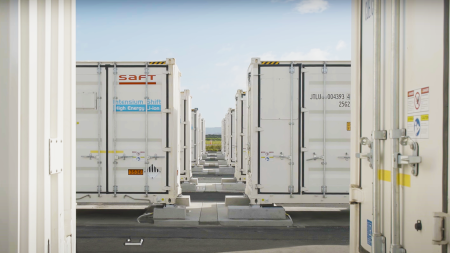Toyota has also unveiled plans to introduce hydrogen fuel cell light trucks to the Japanese market next year, and the UK has launched a contract-for-difference scheme for large-scale hydrogen projects.
In addition, Japanese scientists have designed a ruthenium complex with a nitrogen-containing organic compound to improve proton conduction at high temperatures in fuel cells.
Natural gas prices are currently higher than the discounted average cost of hydrogen (LCOH) produced with alkaline electrolyzer technology on an equivalent energy basis in the United Kingdom, Sweden, Italy, Spain, France, Poland and Germany, according to data provided by BloombergNEF.
The same is not true for China, the United States and the United Arab Emirates, where gas prices are significantly lower. Analysts found that the cheapest hydrogen in the European Union could be produced in Sweden and Italy, while Germany and Poland would have the highest average discounted production cost. “This reflects the comparatively better renewable resources in southern Europe,” Meredith Annex of BloombergNEF.
According to BloombergNEF’s modeling, onshore wind power is the cheapest source of electricity to power electrolysers in all European countries. In contrast, solar power is the cheapest source in Turkey and the United Arab Emirates. “Chinese alkaline electrolyzers are currently the cheapest green hydrogen manufacturing equipment on the market and would allow hydrogen projects to compete most effectively with current natural gas prices.” Proton exchange membrane (PEM) equipment is more expensive, adding an 11-17% price premium over Western alkaline technology. “Using PEM to produce hydrogen would make the clean fuel less competitive with current natural gas prices in Europe,” said Meredith Annex, explaining that gas prices in Europe would likely fall again later this decade, making green hydrogen less competitive on an equivalent energy price basis. “However, industrial players may still see higher demand for green hydrogen as a hedge against future gas market volatility.”
Fukushima Prefecture and Japanese automaker Toyota Motor Corporation plan to launch a hydrogen truck for use in the residential and industrial sectors. Iwaki and Koriyama will be the first two cities to introduce the fuel cell (FC) electric light truck in collaboration with unspecified logistics companies and infrastructure providers.
“When convenience stores and supermarkets start introducing FC light trucks from January 2023, we will build an energy management system that links each company’s fleet management system, vehicle movement information and hydrogen station information,” Toyota said in a statement. The ultimate goal is to optimize logistics and avoid traffic jams at hydrogen stations. Heavy-duty electric FC trucks are expected to be deployed at a later stage.
The project also plans to establish hydrogen models for the industrial sector. Companies will produce green hydrogen locally and use it in their gas furnaces, while stationary DC generators will be installed in offices and stores. So far, the initiatives, which target cities with populations of about 300,000, have attracted 27 partners, mostly local subsidiaries of international companies.
A team of researchers at Tokyo University of Science has designed a highly symmetric ruthenium complex with a nitrogen-containing organic compound that operates without water, which is expected to improve high-temperature proton conduction in fuel cells.
The new hydrogen-bonded metal complex is star-shaped and consists of the ruthenium ion (Ru3+), three imidazoles (HIm) and three imidazolates (Im-). The resulting molecular single crystal exhibits excellent proton conductivity even at temperatures as high as 180 °C and as low as -70 °C. Imidazole typically melts at 120 °C.
“In studying the proton conductivity of this star-shaped metal complex, the team found that each of the six imidazole groups attached to the Ru3+ ion acts as a proton transmitter. This made the molecule six times more powerful than individual HIm molecules, which can only carry one proton at a time,” the team said. The researchers sought an alternative to Nafion membranes and used a synthetic polymer-based ion membrane, which serves as a water-based proton-conducting solid electrolyte.
The use of water prevents the fuel cell from operating at temperatures above 100°C. According to the researchers, the results of their new molecular design could be used to develop new high-temperature proton conductors and improve the functionality of existing conductors. The researchers presented their results in the study “High-temperature proton conduction in a hydrogen-bonded high-symmetry molecular crystal of Ru(III) complexes with six imidazole-imidazolate ligands,” which was recently published in Chemistry – A European Journal.
The UK has launched a new contract business model resembling a Contract for Difference (CFD) for green hydrogen producers. Project proponents can submit their proposals until September 7. The grant is awarded by the difference between a “strike price” reflecting the cost of producing hydrogen and a “reference price” reflecting the market value of hydrogen. The UK government has allocated up to £240 million (€281.4 million) to support the initial development and construction costs of low-carbon hydrogen projects. Companies can submit proposals for both programs through a single application process. Additional details on the budget for this first procurement round will be provided in early 2023.
Hydrogen-electric aircraft manufacturer ZeroAvia announced it has received $30 million in funding from new investors Barclays Sustainable Impact Capital, NEOM, AENU and International Airlines Group (IAG).
The Government of the Province of Alberta in Canada has launched the open process for the first round of funding available under the $50 million Hydrogen Centre of Excellence.








